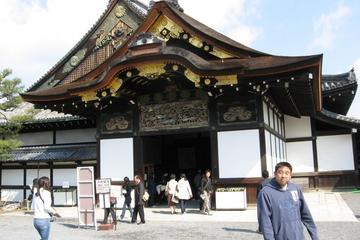
If you’ve ever seen pictures of Nara online, you might think the beautiful temples couldn’t possibly be more breathtaking in person, but you’d be wrong. Out of all the cities in Japan I’ve visited, Nara remains at the top of my list. It’s a city full of historical treasures and landscapes that look like they came straight off postcards. If you’re visiting Kyoto or Osaka, you should seriously consider taking a day trip to see the breathtaking temples of Nara and everything else this ancient city has to offer.
A Brief History Of Nara, Japan
Before visiting Japan for the first time, I didn’t know much about Japan’s history. At the time, I just knew I loved the local food and was a big fan of anime. However, after visiting for the first time, I brought a book to read on a plane about Japan’s history. After reading it, I decided I had to come to Nara someday.
First and foremost, Nara is one of Japan’s major cultural and spiritual hubs, as seen by the city’s plethora of temples and shrines. In fact, the government’s concern that the city’s Buddhist temples were growing too dominant is one of the reasons they relocated the capital outside of Nara. What’s even more fascinating is that all of these temples survived over the years. They’ve withstood time, conflicts, and natural calamities, in contrast to many Japanese cities that earthquakes and fires have destroyed.
Visiting The Temples at Nara Park
The second time I visited Japan, I stayed in Osaka. From there, it’s only a short train ride away to Nara, Japan. I was surprised by how fast time flew before I stood in Nara Park. And then, it was just one surprise after the other. When I believed I had just witnessed the most spectacular architectural work, I would soon come across another one that was quite as stunning. Each temple and shrine is magnificent in its unique manner, and taken as a whole, they form an astounding collection of ancient Japanese architecture.
Kofuku-Ji Temple
In retrospect, the Kofuku-Ji Temple and the attached five-story pagoda, which are the first structures you encounter as you enter the park from the railway station, may have been the least striking. However, this in no way means Kofuku-Ji Temple wasn’t breathtaking in its own way. Standing in front of a building that’s more than a thousand years old felt indescribable. And that was only the start.
Kasuga Taisha Shrine
The second temple I visited that day was Kasuga Taisha Shrine. On my way there, I finally saw my first deer. I’ve read about the deers before and was ecstatic when one got near my group and me. However, the excitement from the deer quickly washed away as we got closer to the oldest shrine in Nara, Kasuga Taisha, and heard about its history. This was probably one of my favorite temples in Nara, Japan. I can’t explain it; it just blew me away.
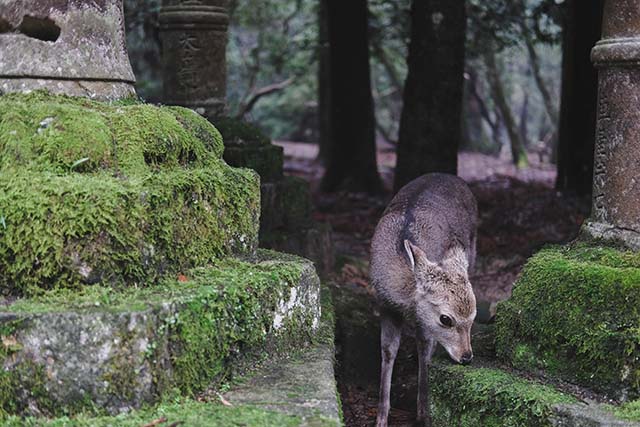
Todai-ji Temple
Want to see the largest and most reverend Buddha statue in the world? In that case, you should visit Todai-ji Temple, or the Great Eastern Temple, as some call it. When it was built, the statue of Buddha inside it almost bankrupted Japan. Nigatsu-Do Hall is an absolute must-see, a stunning wooden structure with elaborately designed wooden carved panels and large white lanterns. The purification fountain with the dragon is among Nara’s most spectacular structures. You will hear your jaw drop as you pass through the majestic statues of the old Nandaimon Gate.
Yakushi-ji Temple
In my opinion, Yakushi-ji might just be my favorite of the breathtaking temples of Nara, Japan (I might’ve said that about every temple, though). The great vermillion hall of one of the Seven Great Temples of Nanto is almost beyond picture-perfect. Our tour guide told us the story of how the exquisite temple was repeatedly devastated by fire throughout history. Although today’s temple was rebuilt in the 70s, I couldn’t help but wonder if the original building was even more breathtaking.
If You Go:
Traveling to Nara is very easy thanks to Japan’s fantastic railway system. Japan Railways operates frequent quick trains between Osaka JR Station and Nara JR Station, where the journey usually lasts around forty-five minutes. Alternatively, you can take the Kintetsu Railway from Osaka-Namba Station to Nara Kintetsu Station, which is generally about thirty minutes but isn’t included in Japan Rail Pass.
Although I first visited Japan in the summer, I’ve heard that spring is the best time to visit Nara, especially when the cherry blossoms are in bloom. The city of Nara transforms into a sea of exquisite pink and white blossoms for a brief period, usually at the end of March or the beginning of April. However, sakura season usually brings in more tourists than any other season, so you can expect crowds and higher prices during that time. According to some, Japan is also lovely to visit in autumn and near the Christmas season, not the mention New Year’s Eve!
Moving To Japan
I can’t say I didn’t fall in love with Japan each time I visited. Over the years, I also met quite a few people who moved from the US to Japan, and I couldn’t be more jealous of them. Of course, moving to Japan isn’t entirely in my cards just yet, but maybe one day. If you’re considering moving to Japan, you should be ready for the change, culturally, but more importantly, a change in the climate. The seasons there aren’t like here at home. The first summer I visited, it almost didn’t stop raining for five days straight!
Final Thoughts
Nara is one of Japan’s most culturally significant cities, and Nara park is an absolute must-see if you’re visiting the Kyoto-Osaka area. When visiting, you’ll fall in love with the magical horizons and fascinating history of the place. If that’s not worth enough to you, consider how cool your pictures on Instagram will look if you take them in front of the breathtaking temples of Nara, Japan!
About the author:
Elsie Klein is a copywriter with a passion for traveling. Currently, she’s working All Season Movers, but when she’s not in the office, she’s booking her next trip in her venture to travel to visit every country in the world.
Click Here To Browse Available Tours of Nara, Japan

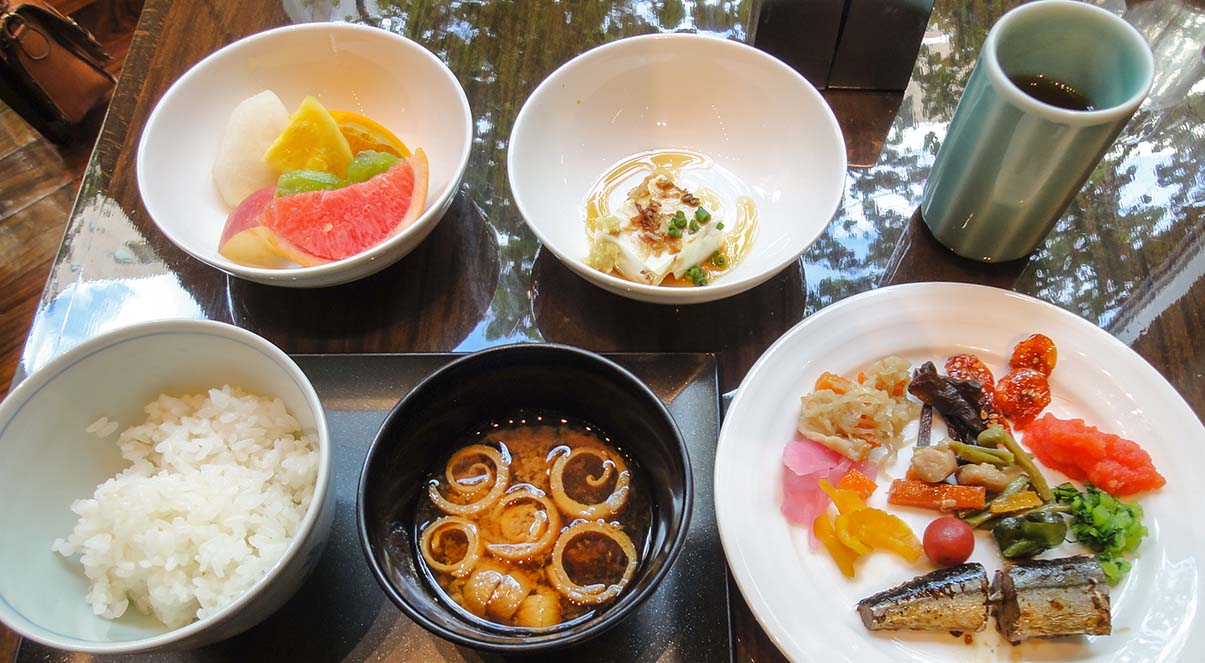




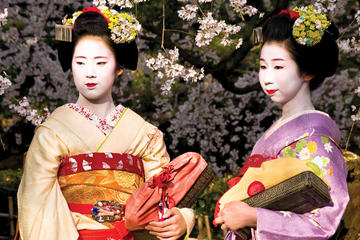

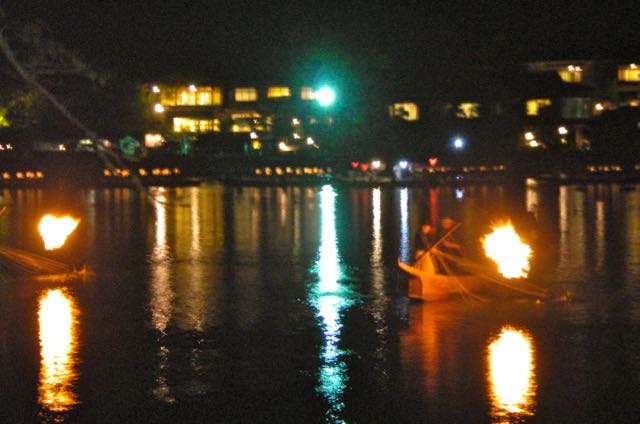 by Anne Harrison
by Anne Harrison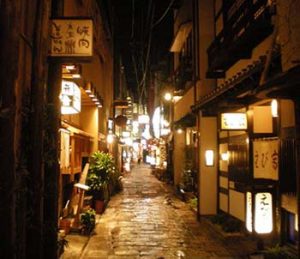
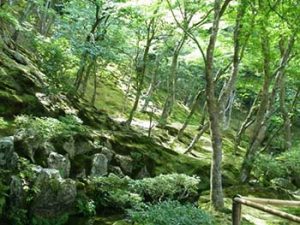
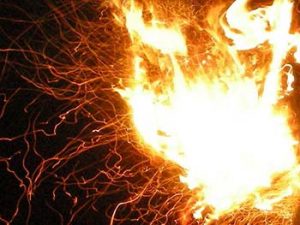

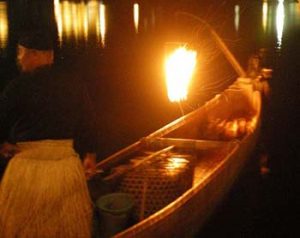
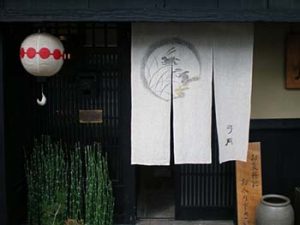

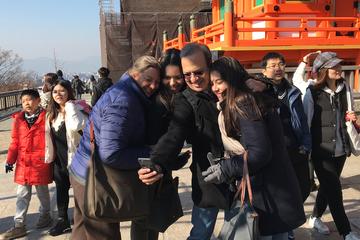
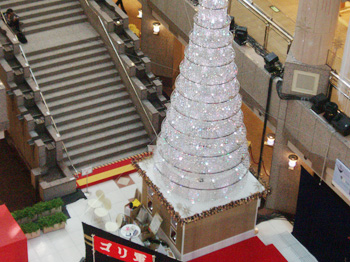 by Leslie Hebert
by Leslie Hebert 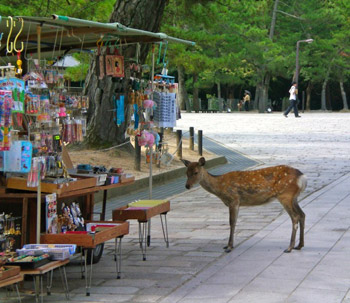
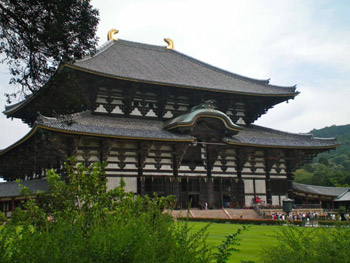 One of the delights of staying for a few nights in a place, rather than visiting for a day, is having the time for unexpected discoveries. We passed the night in a youth hostel, and breakfast came courtesy of the vending machine: a variety of different flavored minute noodles. Another machine offered a range of both hot and cold coffees, all served in a can, the temperature indicated by the color. The man on reception even made us some green tea in a gorgeous ceramic pot.
One of the delights of staying for a few nights in a place, rather than visiting for a day, is having the time for unexpected discoveries. We passed the night in a youth hostel, and breakfast came courtesy of the vending machine: a variety of different flavored minute noodles. Another machine offered a range of both hot and cold coffees, all served in a can, the temperature indicated by the color. The man on reception even made us some green tea in a gorgeous ceramic pot.
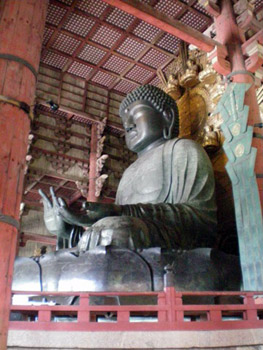 Everywhere we walked, the deer were relaxing in the shade, nibbling the grass, or simply wandering at leisure.
Everywhere we walked, the deer were relaxing in the shade, nibbling the grass, or simply wandering at leisure.
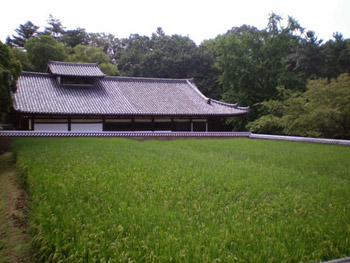 The walkways around the shrine are lined with some 3000 stone and bronze lanterns. These have been donated over the centuries as tokens of thankfulness and faith. During festivals in February and mid August they are lit: a spectacular time to visit. You can also buy a slip of paper (omikuji) with your fortune; if unfavorable, simply tie it to one of the trees to negate its effects. Behind the temple is the Rokuen, a botanical garden preserving Japanese plants, and famous for its wisteria, plus its Homotsuden, a hall displaying costumes, swords and ancient armor.
The walkways around the shrine are lined with some 3000 stone and bronze lanterns. These have been donated over the centuries as tokens of thankfulness and faith. During festivals in February and mid August they are lit: a spectacular time to visit. You can also buy a slip of paper (omikuji) with your fortune; if unfavorable, simply tie it to one of the trees to negate its effects. Behind the temple is the Rokuen, a botanical garden preserving Japanese plants, and famous for its wisteria, plus its Homotsuden, a hall displaying costumes, swords and ancient armor.